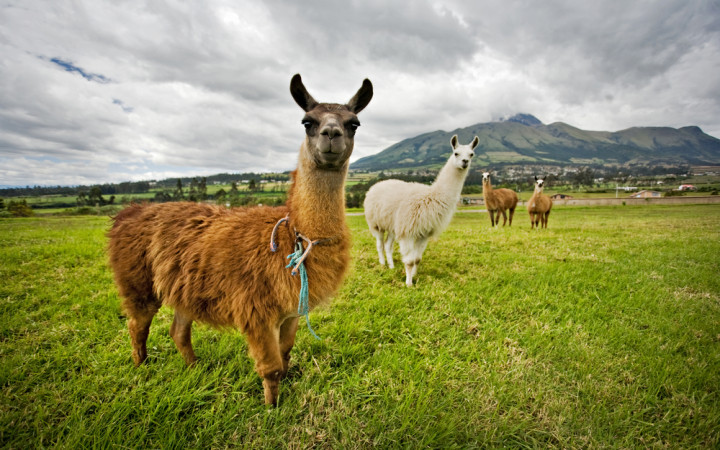I'm a relative of the camel, but I don't have a hump. Some people also think I have bad manners because I spit occasionally. Who am I? A llama, of course!
Many children may first learn about the llama when they see the word appear on a spelling test. That double “l" at the beginning of the word is quite uncommon and can trip you up at first.
The word “llama" is actually a Peruvian word that the Spanish translated as “sheep" and incorporated into their own language. When the word moved to the English language, it kept its unique spelling.
Llamas are native to South America. Rather than living in the wild, llamas are domestic animals used by the people of the Andes Mountains to carry heavy loads. Llamas have been used as pack animals in this way for thousands of years.
In the rough terrain of the Andes, llamas are able to carry heavy loads (50-75 pounds) over long distances (up to 20 miles) each day. It's not uncommon to see large packs of hundreds of llamas transporting goods through the mountains.
Llamas eat grass and plants. Like their relative the camel, they also can survive with little water. This makes them ideal working animals.
They provide much more than just muscle, though. Llamas produce wool that people weave into clothing, carpets, and even ropes. When llamas die, some people eat their meat for food and make leather from their hides.
Today, llamas can also be found in many other places around the world. For example, in the United States, you may find llamas kept as pets or as working animals on farms.
Llama wool is often harvested in the U.S. to make a variety of specialty clothing items. Llamas can also be used as guard animals to protect sheep and goats from coyotes and other predators.
Llamas can make good animals for kids to train and take care of, since they rarely bite or kick. But what about the spitting? As it turns out, llamas usually don't spit at people.
Llamas do spit on each other from time to time. It's their way of expressing irritation or displeasure with other llamas.
Llamas that spit on humans were probably raised by humans and haven't spent much time around other llamas. When this happens, they treat humans just like they would other llamas.
If you train a llama well and give it time with other llamas, it usually won't spit at people unless it's mistreated. In fact, well-trained llamas are usually very friendly and respectful animals.




